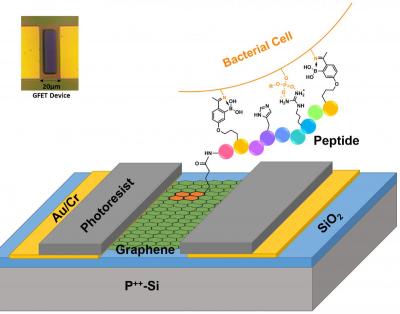Graphene-based platform enables real-time monitoring of the molecular self-assembly process at the solid/liquid interface
Researchers from the University of Strasbourg & CNRS (France), in collaboration with Humboldt University of Berlin and DWI Leibniz Institute for Interactive Materials/RWTH Aachen University in Germany, have shown that graphene devices can be used to monitor in real time the dynamics of molecular self-assembly at the solid/liquid interface.
Molecular self-assembly on surfaces is an attractive strategy to provide substrates with specific properties. Understanding the dynamics of the self-assembly process is vital in order to master surface functionalization. However, real-time monitoring of molecular self-assembly on a given substrate has proven complicated by the challenge to disentangle interfacial and bulk phenomena.






